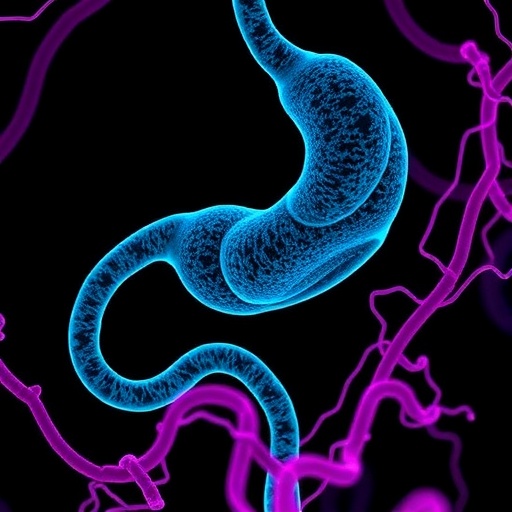In the landscape of modern medicine, the need for precise and efficient diagnostic methods cannot be overstated. In particular, the diagnosis of biliary strictures—a condition that can lead to severe complications if left untreated—requires advanced techniques to differentiate between benign and malignant lesions effectively. A recent study examined the role of Rapid On-Site Evaluation (ROSE) in enhancing Endoscopic Retrograde Cholangiopancreatography (ERCP)-guided biopsy procedures and the findings underscore the critical need for enhanced diagnostic capabilities in this arena.
The study was a retrospective, single-center investigation focused on the impact of ROSE on the efficacy of ERCP-guided biopsies. By providing immediate cytological analysis during the procedure, ROSE aims to facilitate timely diagnostic decisions, thereby potentially improving patient outcomes. However, the study also underscored several caveats that must be considered when interpreting its findings, including potential selection biases and confounding factors.
One of the central challenges in assessments of ROSE lies in its implementation; the practice is often predicated on the presence of on-site cytopathology expertise. This reality poses a significant limitation for wider applicability. In facilities lacking immediate cytological support, the advantages of ROSE may be diminished, calling into question its universal effectiveness across diverse healthcare environments. Without dedicated training or consultation via telepathology, the full benefits of this approach may not be realizable.
While the study included a robust population of patients, the moderate sample size posed limitations on its statistical power, particularly concerning low-frequency outcomes like complication rates and changes in specificity. Thus, although trends may be apparent, the ability to draw firm conclusions about the risks associated with ROSE-enhanced procedures remains somewhat constrained.
Additionally, the study highlighted another key aspect—the varying prevalence of malignancies across different medical contexts. Conducted at a tertiary referral center known for a high incidence of malignancies, the predictive values developed in this study may not hold true in environments where anti-cancer diagnostics are less frequent. Consequently, the negative predictive value (NPV) and positive predictive value (PPV) gained in this setting require further validation in low-prevalence contexts to ensure their generalizability.
Compounding these limitations is the acknowledgment that the effectiveness of ROSE is not solely determined by its procedural features but heavily relies on the expertise of the cytopathologists involved. The intricacies of cellular identification necessitate in-depth knowledge and skill that may not be uniformly distributed across different centers. For healthcare providers in regions where cytologic proficiency is limited, the translation of ROSE protocols into practice could be problematic without systematic training measures.
The implications of this study reach beyond mere procedural advancements; they resonate within the broader discourse on improving diagnostic pathways in gastrointestinal oncology. As the medical community continues to seek out methodologies that not only expedite diagnosis but also enhance accuracy, the role of technologies like ROSE will likely remain a focal point of ongoing research and development.
Furthermore, as ascertained by the study’s findings, there exists a palpable gap in our understanding of how best to integrate augmented diagnostic tools within existing clinical frameworks. This landscape indicates a clear opportunity for future studies that explore the implementation models of ROSE across various healthcare settings, thereby elucidating best practices for fostering cytopathologic expertise and optimizing patient care outcomes.
Equipped with such knowledge, healthcare professionals can be better positioned to navigate the complexities of diagnosing biliary strictures effectively. By advocating for a deeper appreciation of the potential benefits and limitations of technologies like ROSE, we can drive forward-thinking discussions—and ultimately innovations—in the realm of gastrointestinal diagnostics.
Moreover, it is critical for researchers moving forward to design trials that not only examine the efficacy of ROSE in controlled environments but also take into account the subtleties introduced by a more heterogeneous patient population. Doing so will bolster the evidence base required for the widespread adoption of such techniques, ensuring they are both safe and effective for a wide range of patients.
As we reflect on the advancements in diagnostic methodologies, the potential for ROSE to transform the landscape of biliary stricture diagnosis is evident. The study serves as a compelling call to action for enhanced research efforts, advocating both for refining the technology itself and for developing robust pathways for its implementation in varied clinical scenarios.
The ongoing exploration into the combination of technological innovations and expert cytopathology will, without a doubt, shape the future of diagnostic medicine. By fostering collaborative discussions and sharing insights across specialties, the healthcare community can harness collective expertise to drive continued advancements in healthcare delivery, ultimately aiming for timely and accurate diagnoses that pave the way for improved patient prognoses.
In conclusion, ROSE-enhanced ERCP-guided biopsy emerges as a significant player in the diagnostic theater for biliary strictures, yet as noted, its efficacy cannot be taken at face value. The nuances revealed in this research underscore the complexities of clinical decision-making in oncology and the continuous journey toward achieving diagnostic excellence.
Subject of Research: Diagnostic methods for biliary stricture using ROSE-enhanced ERCP-guided biopsy.
Article Title: The role of ROSE-enhanced ERCP-guided biopsy in diagnosing biliary stricture.
Article References:
Lv, C., Zhang, Y., Bai, T. et al. The role of ROSE-enhanced ERCP-guided biopsy in diagnosing biliary stricture.
Sci Rep 15, 38065 (2025). https://doi.org/10.1038/s41598-025-21854-1
Image Credits: AI Generated
DOI: 10.1038/s41598-025-21854-1
Keywords: ROSE, ERCP, biliary stricture, cytopathology, diagnostic methods, oncology, healthcare delivery.




